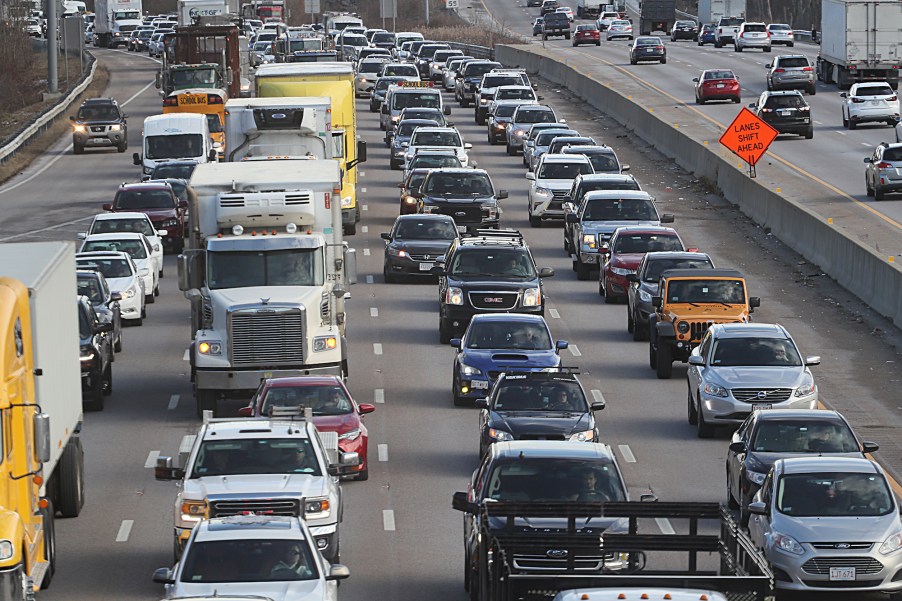
Nissan Has Intern Sit in Stop-and-Go Traffic Every Day for Months – for Research
New technology – like adaptive cruise control – doesn’t simply come out of thin air. It takes years of development and testing. While most of that can be in an R&D lab someplace, eventually, it must be tested in the real world. Nissan has been using its interns to test adaptive cruise control in stop-and-go traffic on the infamous backed-up highways of Los Angeles, California.

How does adaptive cruise control work?
According to CarScoops, former Nissan intern Tyler Szymkowski could probably tell us more about it than anyone wants to know. When it came time to test Nissan’s adaptive cruise control called ProPILOT Assist, Szymkowski was the man for the job.
During his internship in 2018, Szymkowski would have to check his phone to see when he should hop out onto the highway. Unlike most of us, he wasn’t waiting for traffic to ease up. Instead, his goal was to find the gridlock and hang out there in his Nissan tester.
“We would target rush-hour traffic,” said Szymkowski. “Each day, I would look to see if it was a ‘good’ traffic day and good for me meant bad traffic for most people.”
Are self-driving cars real?

Although “self-driving” cars have been the center of controversy lately, specifically surrounding Tesla, this isn’t exactly what Nissan’s ProPILOT Assist is going for.
Unlike Tesla’s misleading and ill-named AutoPilot mode, Nissan’s version is a hands-on driver-assist feature that can manage braking and accelerating on the highway and even in stop-and-go-traffic situations.
Although this tech is promising as much as Tesla’s, what it is promising is likely much closer to the truth than Tesla’s, thanks to the mind-numbing testing of Szymkowski.
He found that the car’s system would only bring the car to a complete stop for three seconds before it decided to take off again. If traffic stopped for more than three seconds and he had to use the brakes, the Nissan would have to be spurred into motion again with the tap of the throttle instead of automatically.
“Customers were telling us that three seconds wasn’t long enough,” said Brittany Tessmer, a Nissan senior project engineer in advanced driver-assistance systems. “How long the system could sit and then re-engage to make the experience more seamless was something we needed to pinpoint. If three seconds isn’t long enough, then what is?”
How long did the Nissan intern have to sit in traffic jams?
According to CarScoops, the Nissan research team sent our brave test driver out into the lion’s den 64 times. However, LA wasn’t the only traffic he had to endure. Szymkowski was sent to sit in Detroit, Pittsburgh, Washington, San Francisco, and Baltimore.
Not only did Szymkowski sit in traffic jams for countless hours over the span of a few months, but he also says he had to sit for hours waiting for roads to turn into parking lots.
After all this time and research, the Nissan team finally realized that the time people spend in traffic is far more than they realized. The system was eventually updated to allow cars to stay stopped for up to 30 seconds instead of three.
While some might think that making an intern sit in traffic every day is a bit cruel, Szymkowski says, “it was really cool that Nissan was letting an intern have an impact on a new emerging technology.”
His work led to this new system going into the 2021 Nissan Rogue and the 2022 Nissan Pathfinder. Even more so, the data collected by the intern and the car’s computer will provide tons of valuable progress for the future of Nissan’s driver assists.



